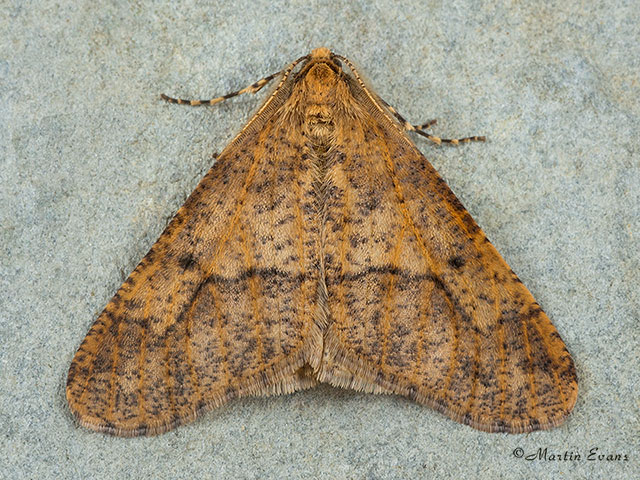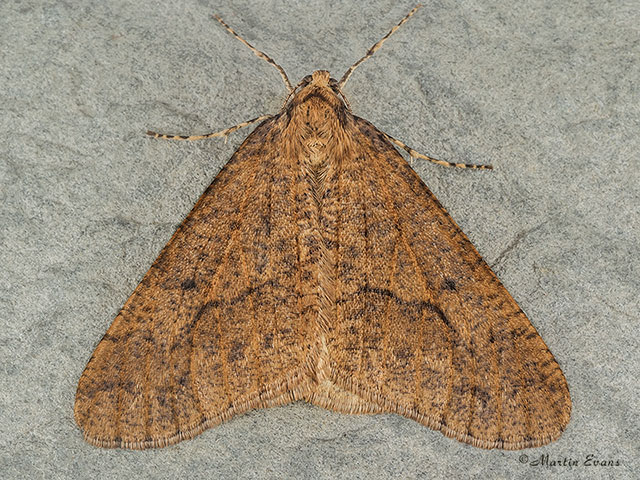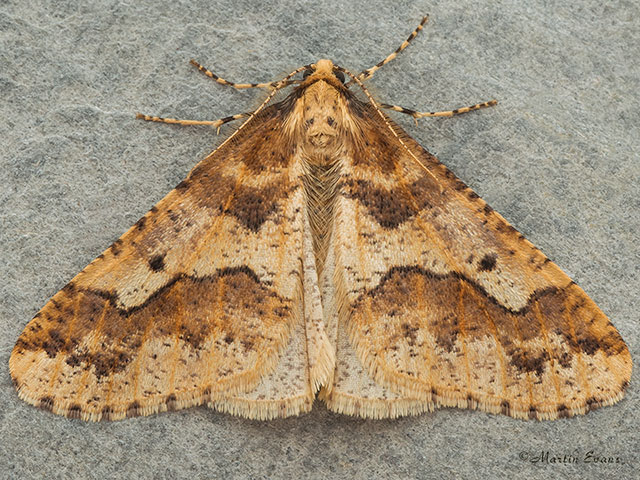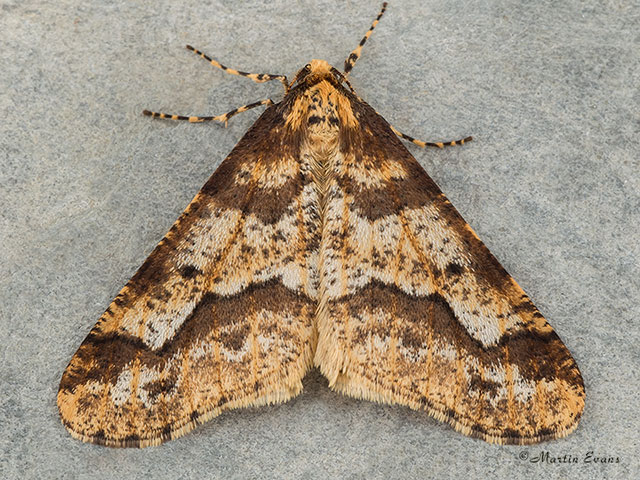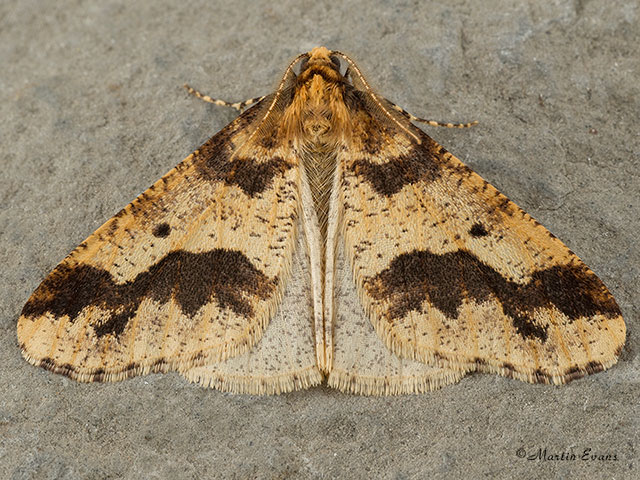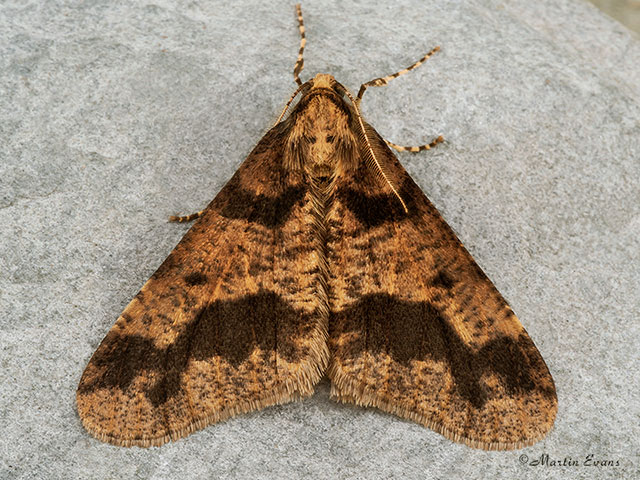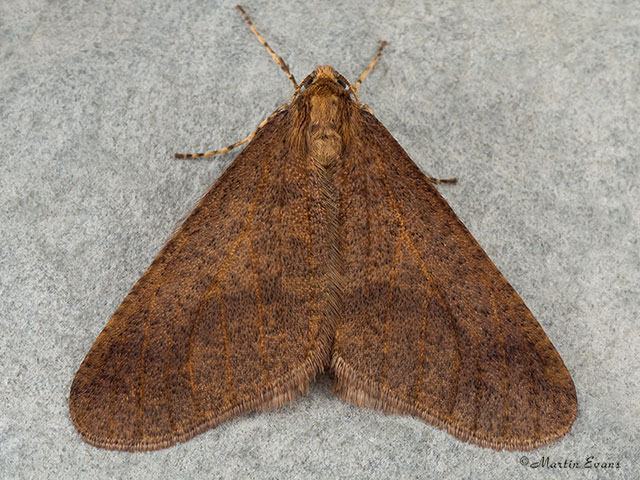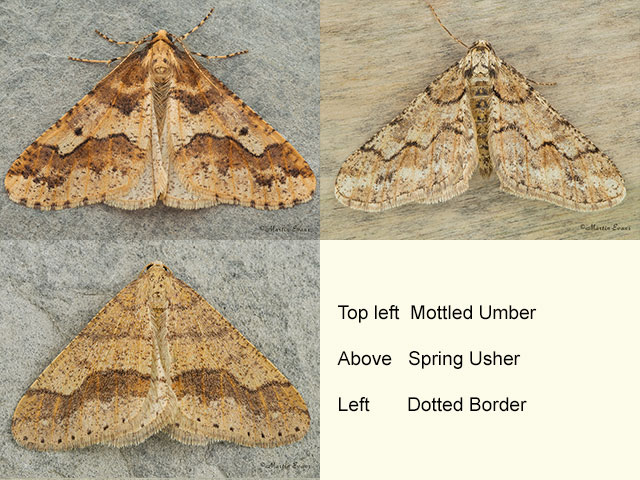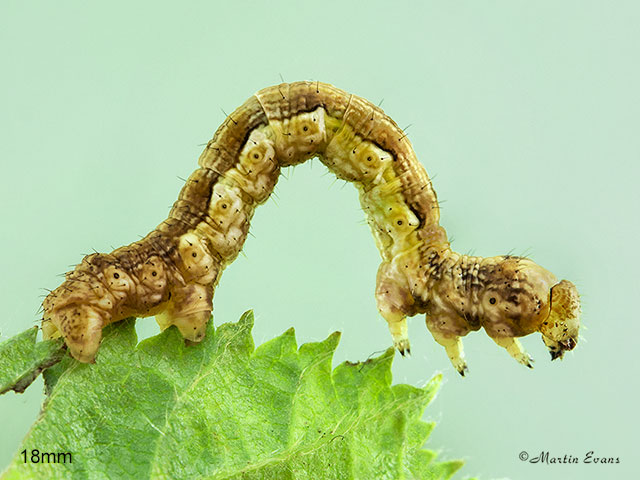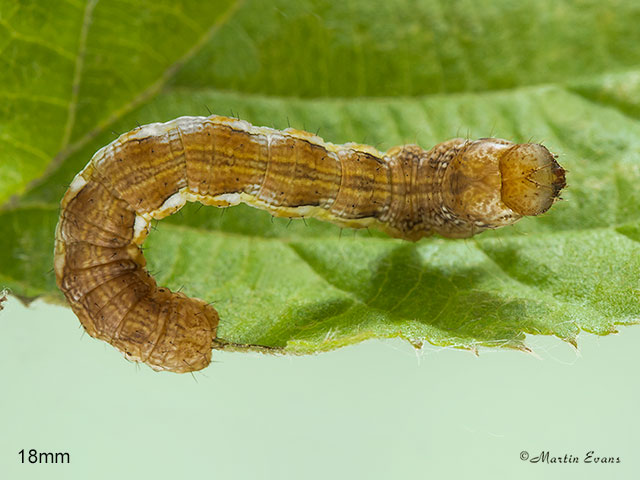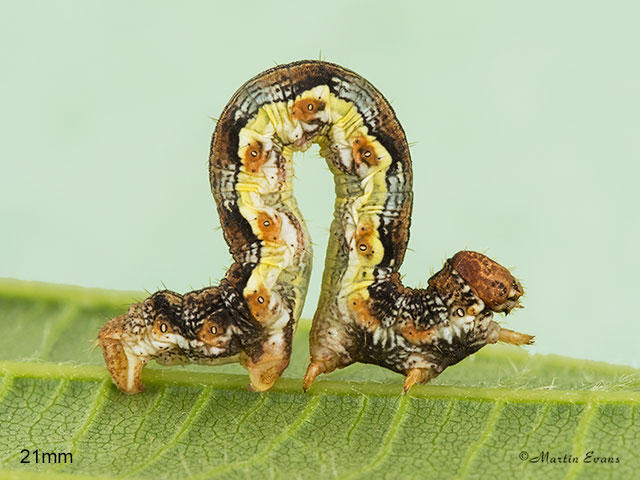Geometridae
70.256 Mottled Umber Erannis defoliaria (Clerck, 1759)
Common
Similar species: This moth has an indented inner cross-line and an outer cross-line that is deeply indented once with another slight indentation before running outward to the trailing edge. Spring Usher Agriopis leucophaearia has a semi-circular inner cross-line and an outer cross-line that is deeply indented twice then runs outward to the trailing edge. Please note that some specimens have a dark, thickened cross-line at the leading edge that makes the shape hard to determine. The female is fairly distinct and is long scaled (but not hairy) with no noticeable wings and two large dots on the first two abdominal segments. Dotted Border Agriopis marginaria has an almost straight inner cross line and an outer cross-line that is indented once then runs only slightly outwards to the trailing edge. The flightless female has quite large wings with two dark bars across them and a paler outer area.
Forewing: 18 to 25mm
Habitats: Deciduous woodland, scrub, hedgerows, gardens, calcareous scrub grassland, upland scrub grassland, moorland and heathland.
Habits: The moth flies amongst the trees from dusk and comes to light throughout the evening. The wingless female has to be searched for on trunks after dark.
Foodplant: The larva feeds on Sessile Oak, Pedunculate Oak, Silver Birch, Downy Birch, Blackthorn, Hawthorn, Midland Hawthorn, Hazel, Goat Willow, Field Maple, Sycamore, Hornbeam, Sweet Chestnut, elms, Dog-rose and other deciduous trees and shrubs. There is a record of it feeding on Sitka Spruce. It pupates in the leaf litter or just under the soil surface.
On the European mainland it has also been recorded feeding on Small-leaved Lime, Large-leaved Lime, Beech and Wych Elm.
